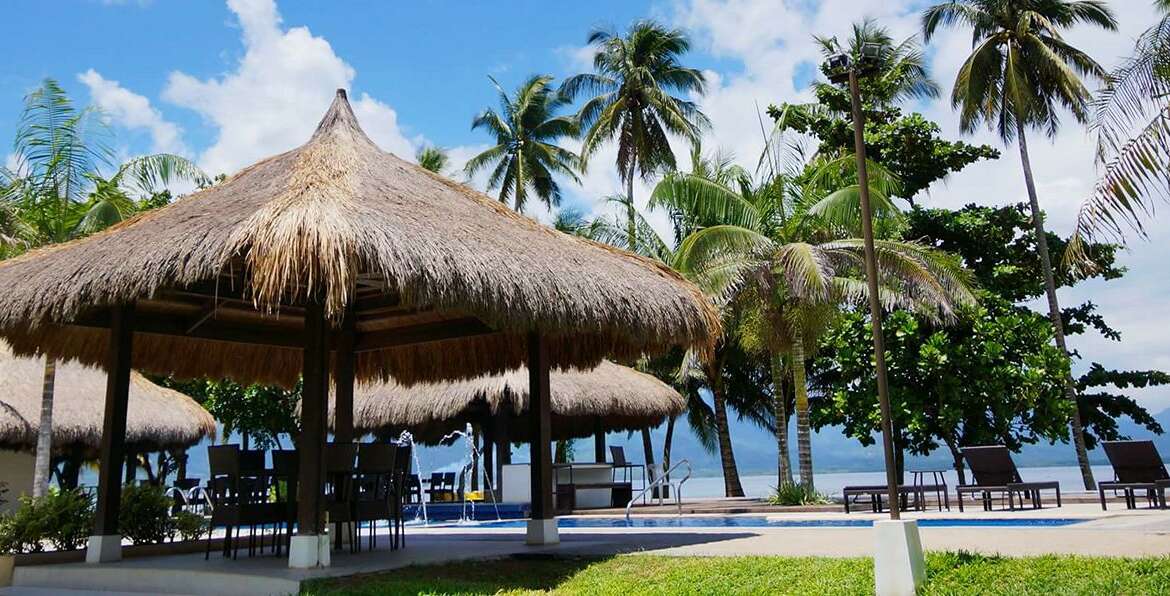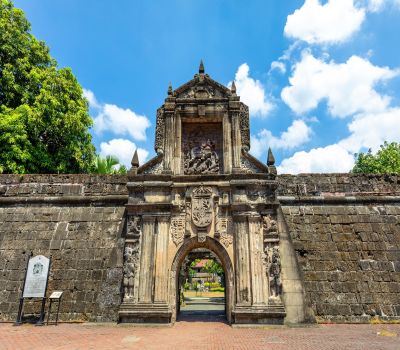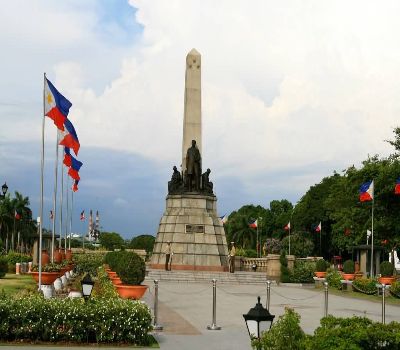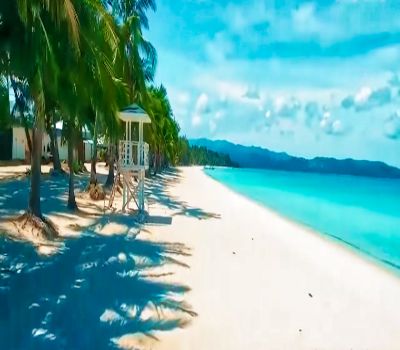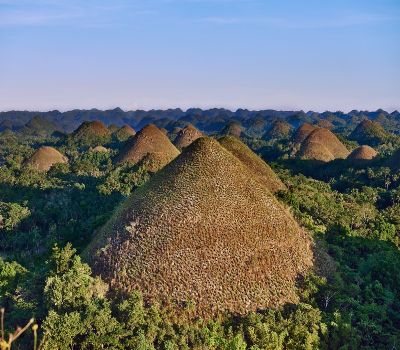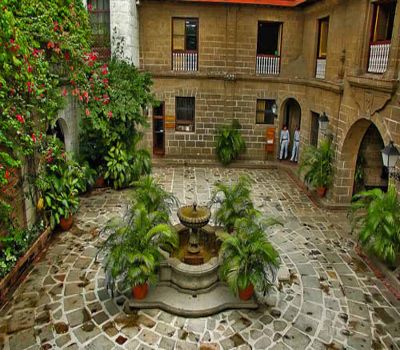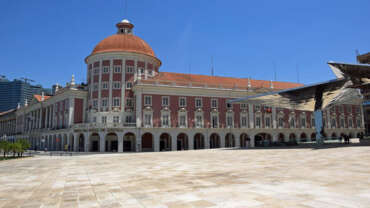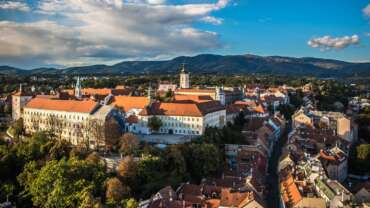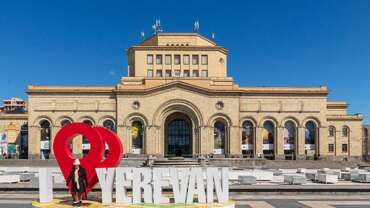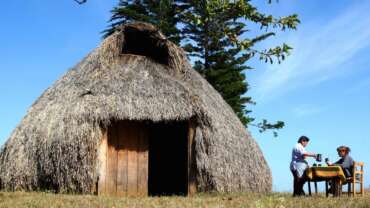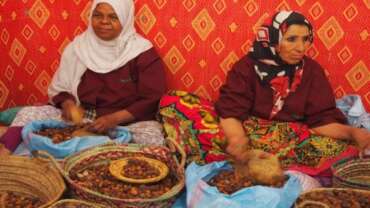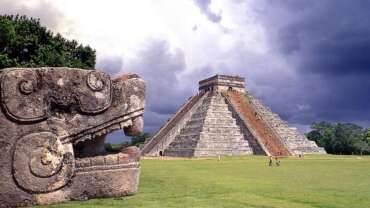Philippines - IT'S MORE FUN IN HERE
A country with 7,641 islands, the Philippines offers you a variety of breath taking places with affordable prices that will get a great value for your money. Travelling Philippines is so much fun because of our best and world class beaches, must try food, festivals, culture and friendly-hospitable Filipinos. Don’t miss out on such a beautiful country.
The reign of the sun and the inviting temperature has been calling everyone to cool down and unwind. With this country’s God-given beauty and wonder, city dwellers and foreign tourists are pumped to venture out and explore various tourist spots.
A country with 7,641 islands, the Philippines offers you a variety of breathtaking places with affordable prices that will get a great value for your money. Travelling Philippines offers an enjoyment like no other because of our world class beaches, must try cuisine, colorful festivals, diverse culture, and its humble people. Don’t miss out on what Philippines can offer.
Be involved with one of the 8 Wonder Cities – heritage houses in Vigan, immerse in the pristine waters of Pagudpud, capture the sunrise of Sagada and feel the cool breeze of Baguio. Come and capture the breath-taking view of Banaue-Rice Terraces. Dive into the world underwater in Palawan, explore the historic island of Cebu and the province known for its Chocolate Hills and Tarsier (smallest primate), Bohol. Troll the Hundred Islands of Alaminos and experience the surfer’s paradise–Baler. But your trip would not be complete without seeing the Filipino’s smile of delight that will make you feel more welcomed to the paradise called Philippines!
History of Philippines
The Philippines is the only country in Southeast Asia that was subjected to Western colonization before it had the opportunity to develop either a centralized government ruling over a large territory or a dominant culture. In ancient times the inhabitants of the Philippines were a diverse agglomeration of peoples who arrived in various waves of immigration from the Asian mainland and who maintained little contact with each other. Contact with Chinese traders was recorded in 982, and some cultural influences from South Asia, such as a Sanskrit-based writing system, were carried to the islands by the Indonesian empires of Srivijaya (7th–13th century) and Majapahit (13th–16th century); but in comparison with other parts of the region, the influence of both China and India on the Philippines was of little importance. The peoples of the Philippine archipelago, unlike most of the other peoples of Southeast Asia, never adopted Hinduism or Buddhism.
Pre-Spanish history
According to what can be inferred from somewhat later accounts, the Filipinos of the 15th century must have engaged primarily in shifting cultivation, hunting, and fishing. Sedentary cultivation was the exception. Only in the mountains of northern Luzon, where elaborate rice terraces were built some 2,000 years ago, were livelihood and social organization linked to a fixed territory. The lowland peoples lived in extended kinship groups known as barangays, each under the leadership of a datu, or chieftain. The barangay, which ordinarily numbered no more than a few hundred individuals, was usually the largest stable economic and political unit.
Within the barangay the status system, though not rigid, appears to have consisted of three broad classes: the datu and his family and the nobility, freeholders, and “dependents.” This third category consisted of three levels—sharecroppers, debt peons, and war captives—the last two levels being termed “slaves” by Spanish observers. The slave status was inherited but, through manumission and interclass marriage, seldom extended over more than two generations. The fluidity of the social system was in part the consequence of a bilateral kinship system in which lineage was reckoned equally through the male and female lines. Marriage was apparently stable, though divorce was socially acceptable under certain circumstances.
Early Filipinos followed various local religions, a mixture of monotheism and polytheism in which the latter dominated. The propitiation of spirits required numerous rituals, but there was no obvious religious hierarchy. In religion, as in social structure and economic activity, there was considerable variation between—and even within—islands.
This pattern began to change in the 15th century, however, when Islam was introduced to Mindanao and the Sulu Archipelago through Brunei on the island of Borneo. Along with changes in religious beliefs and practices came new political and social institutions. By the mid-16th century two sultanates had been established, bringing under their sway a number of barangays. A powerful datu as far north as Manila embraced Islam. It was in the midst of this wave of Islamic proselytism that the Spanish arrived. Had the Spanish come a century later or had their motives been strictly commercial, Filipinos today might be a predominantly Muslim people.
The Spanish period
Spanish colonial motives were not, however, strictly commercial. The Spanish at first viewed the Philippines as a stepping-stone to the riches of the East Indies (Spice Islands), but, even after the Portuguese and Dutch had foreclosed that possibility, the Spanish still maintained their presence in the archipelago.
The Portuguese navigator and explorer Ferdinand Magellan headed the first Spanish foray to the Philippines when he made landfall on Cebu in March 1521; a short time later he met an untimely death on the nearby island of Mactan. After King Philip II (for whom the islands are named) had dispatched three further expeditions that ended in disaster, he sent out Miguel López de Legazpi, who established the first permanent Spanish settlement, in Cebu, in 1565. The Spanish city of Manila was founded in 1571, and by the end of the 16th century most of the coastal and lowland areas from Luzon to northern Mindanao were under Spanish control. Friars marched with soldiers and soon accomplished the nominal conversion to Roman Catholicism of all the local people under Spanish administration. But the Muslims of Mindanao and Sulu, whom the Spanish called Moros, were never completely subdued by Spain.
Spanish rule for the first 100 years was exercised in most areas through a type of tax farming imported from the Americas and known as the encomienda. But abusive treatment of the local tribute payers and neglect of religious instruction by encomenderos (collectors of the tribute), as well as frequent withholding of revenues from the crown, caused the Spanish to abandon the system by the end of the 17th century. The governor-general, himself appointed by the king, began to appoint his own civil and military governors to rule directly.
Central government in Manila retained a medieval cast until the 19th century, and the governor-general was so powerful that he was often likened to an independent monarch. He dominated the Audiencia, or high court, was captain-general of the armed forces, and enjoyed the privilege of engaging in commerce for private profit.
Manila dominated the islands not only as the political capital. The galleon trade with Acapulco, Mex., assured Manila’s commercial primacy as well. The exchange of Chinese silks for Mexican silver not only kept in Manila those Spanish who were seeking quick profit, but it also attracted a large Chinese community. The Chinese, despite being the victims of periodic massacres at the hands of suspicious Spanish, persisted and soon established a dominance of commerce that survived through the centuries.
Manila was also the ecclesiastical capital of the Philippines. The governor-general was civil head of the church in the islands, but the archbishop vied with him for political supremacy. In the late 17th and 18th centuries the archbishop, who also had the legal status of lieutenant governor, frequently won. Augmenting their political power, religious orders, Roman Catholic hospitals and schools, and bishops acquired great wealth, mostly in land. Royal grants and devises formed the core of their holdings, but many arbitrary extensions were made beyond the boundaries of the original grants.
The power of the church derived not simply from wealth and official status. The priests and friars had a command of local languages rare among the lay Spanish, and in the provinces they outnumbered civil officials. Thus, they were an invaluable source of information to the colonial government. The cultural goal of the Spanish clergy was nothing less than the full Christianization and Hispanization of the Filipino. In the first decades of missionary work, local religions were vigorously suppressed; old practices were not tolerated. But as the Christian laity grew in number and the zeal of the clergy waned, it became increasingly difficult to prevent the preservation of ancient beliefs and customs under Roman Catholic garb. Thus, even in the area of religion, pre-Spanish Filipino culture was not entirely destroyed.
Economic and political institutions were also altered under Spanish impact but perhaps less thoroughly than in the religious realm. The priests tried to move all the people into pueblos, or villages, surrounding the great stone churches. But the dispersed demographic patterns of the old barangays largely persisted. Nevertheless, the datu’s once hereditary position became subject to Spanish appointment.
Agricultural technology changed very slowly until the late 18th century, as shifting cultivation gradually gave way to more intensive sedentary farming, partly under the guidance of the friars. The socioeconomic consequences of the Spanish policies that accompanied this shift reinforced class differences. The datus and other representatives of the old noble class took advantage of the introduction of the Western concept of absolute ownership of land to claim as their own fields cultivated by their various retainers, even though traditional land rights had been limited to usufruct. These heirs of pre-Spanish nobility were known as the principalia and played an important role in the friar-dominated local government.
The 19th century
By the late 18th century, political and economic changes in Europe were finally beginning to affect Spain and, thus, the Philippines. Important as a stimulus to trade was the gradual elimination of the monopoly enjoyed by the galleon to Acapulco. The last galleon arrived in Manila in 1815, and by the mid-1830s Manila was open to foreign merchants almost without restriction. The demand for Philippine sugar and abaca (hemp) grew apace, and the volume of exports to Europe expanded even further after the completion of the Suez Canal in 1869.
The growth of commercial agriculture resulted in the appearance of a new class. Alongside the landholdings of the church and the rice estates of the pre-Spanish nobility there arose haciendas of coffee, hemp, and sugar, often the property of enterprising Chinese-Filipino mestizos. Some of the families that gained prominence in the 19th century have continued to play an important role in Philippine economics and politics.
Not until 1863 was there public education in the Philippines, and even then the church controlled the curriculum. Less than one-fifth of those who went to school could read and write Spanish, and far fewer could speak it properly. The limited higher education in the colony was entirely under clerical direction, but by the 1880s many sons of the wealthy were sent to Europe to study. There, nationalism and a passion for reform blossomed in the liberal atmosphere. Out of this talented group of overseas Filipino students arose what came to be known as the Propaganda Movement. Magazines, poetry, and pamphleteering flourished. José Rizal, this movement’s most brilliant figure, produced two political novels—Noli me tangere (1887; Touch Me Not) and El filibusterismo (1891; The Reign of Greed)—which had a wide impact in the Philippines. In 1892 Rizal returned home and formed the Liga Filipina, a modest reform-minded society, loyal to Spain, that breathed no word of independence. But Rizal was quickly arrested by the overly fearful Spanish, exiled to a remote island in the south, and finally executed in 1896. Meanwhile, within the Philippines there had developed a firm commitment to independence among a somewhat less privileged class.
Shocked by the arrest of Rizal in 1892, these activists quickly formed the Katipunan under the leadership of Andres Bonifacio, a self-educated warehouseman. The Katipunan was dedicated to the expulsion of the Spanish from the islands, and preparations were made for armed revolt. Filipino rebels had been numerous in the history of Spanish rule, but now for the first time they were inspired by nationalist ambitions and possessed the education needed to make success a real possibility.
The Philippine Revolution
In August 1896, Spanish friars uncovered evidence of the Katipunan’s plans, and its leaders were forced into premature action. Revolts broke out in several provinces around Manila. After months of fighting, severe Spanish retaliation forced the revolutionary armies to retreat to the hills. In December 1897 a truce was concluded with the Spanish. Emilio Aguinaldo, a municipal mayor and commander of the rebel forces, was paid a large sum and was allowed to go to Hong Kong with other leaders; the Spanish promised reforms as well. But reforms were slow in coming, and small bands of rebels, distrustful of Spanish promises, kept their arms; clashes grew more frequent.
Meanwhile, war had broken out between Spain and the United States (the Spanish-American War). After the U.S. naval victory in the Battle of Manila Bay in May 1898, Aguinaldo and his entourage returned to the Philippines with the help of Adm. George Dewey. Confident of U.S. support, Aguinaldo reorganized his forces and soon liberated several towns south of Manila. Independence was declared on June 12 (now celebrated as Independence Day). In September a constitutional congress met in Malolos, north of Manila, which drew up a fundamental law derived from European and Latin American precedents. A government was formed on the basis of that constitution in January 1899, with Aguinaldo as president of the new country, popularly known as the “Malolos Republic.”
Meanwhile, U.S. troops had landed in Manila and, with important Filipino help, forced the capitulation in August 1898 of the Spanish commander there. The Americans, however, would not let Filipino forces enter the city. It was soon apparent to Aguinaldo and his advisers that earlier expressions of sympathy for Filipino independence by Dewey and U.S. consular officials in Hong Kong had little significance. They felt betrayed.
U.S. commissioners to the peace negotiations in Paris had been instructed to demand from Spain the cession of the Philippines to the United States; such cession was confirmed with the signing of the Treaty of Paris on December 10, 1898. Ratification followed in the U.S. Senate in February 1899, but with only one vote more than the required two-thirds. Arguments of “manifest destiny” could not overwhelm a determined anti-imperialist minority.
By the time the treaty was ratified, hostilities had already broken out between U.S. and Filipino forces. Since Filipino leaders did not recognize U.S. sovereignty over the islands and U.S. commanders gave no weight to Filipino claims of independence, the conflict was inevitable. It took two years of counterinsurgency warfare and some wise conciliatory moves in the political arena to break the back of the nationalist resistance. Aguinaldo was captured in March 1901 and shortly thereafter appealed to his countrymen to accept U.S. rule.
The Filipino revolutionary movement had two goals, national and social. The first goal, independence, though realized briefly, was frustrated by the American decision to continue administering the islands. The goal of fundamental social change, manifest in the nationalization of friar lands by the Malolos Republic, was ultimately frustrated by the power and resilience of entrenched institutions. Share tenants who had rallied to Aguinaldo’s cause, partly for economic reasons, merely exchanged one landlord for another. In any case, the proclamation of a republic in 1898 had marked the Filipinos as the first Asian people to try to throw off European colonial rule.
People of Philippines
Ethnic groups
The ethnically diverse people of the Philippines collectively are called Filipinos. The ancestors of the vast majority of the population were of Malay descent and came from the Southeast Asian mainland as well as from what is now Indonesia. Contemporary Filipino society consists of nearly 100 culturally and linguistically distinct ethnic groups. Of these, the largest are the Tagalog of Luzon and the Cebuano of the Visayan Islands, each of which constitutes about one-fifth of the country’s total population. Other prominent groups include the Ilocano of northern Luzon and the Hiligaynon (Ilongo) of the Visayan islands of Panay and Negros, comprising roughly one-tenth of the population each. The Waray-Waray of the islands of Samar and Leyte in the Visayas and the Bicol (Bikol) of the Bicol Peninsula together account for another one-tenth. Filipino mestizos and the Kapampangans (Pampango) of south-central Luzon each make up small proportions of the population.
Many smaller groups of indigenous and immigrant peoples account for the remainder of the Philippines’ population. The aboriginal inhabitants of the islands were the Negritos, a term referring collectively to numerous peoples of dark skin and small stature, including the Aeta, Ita, Agta, and others. Those communities now constitute only a tiny percentage of the total population. From the 10th century, contacts with China resulted in a group of mixed Filipino-Chinese descent, who also account for a minority of the population. Small numbers of resident Chinese nationals, emigrants from the Indian subcontinent, U.S. nationals, and Spanish add to the population’s ethnic and cultural diversity.
Languages
Estimates of the total number of native languages and dialects spoken in the Philippines differ, but scholarly studies suggest that there are some 150. Most of the country’s languages are closely related, belonging to one of several subfamilies of Austronesian—more specifically, Western Malayo-Polynesian—languages. The major languages of the country generally correspond to the largest ethnic groups. Tagalog is the most widespread language of the Central Philippine subfamily, with the bulk of its native speakers concentrated in Manila, central and south-central Luzon, and the islands of Mindoro and Marinduque. The national language of the Philippines, Pilipino (also called Filipino), is based on Tagalog and shares a place with English (the lingua franca) as an official language and medium of instruction. Tagalog (including Pilipino) has the most extensive written literature of all Philippine languages. Cebuano, also a Central Philippine language, is used widely in Cebu, Bohol, eastern Negros, western Leyte, and parts of Mindanao. Ilocano is the most commonly spoken language of the Northern Luzon subfamily, and its speakers constitute the third largest language community of the Philippines.
Other prominent languages of the Central Philippine group include Hiligaynon and Waray-Waray, both spoken in the Visayas, as well as several varieties of Bicol, spoken in southern Luzon. The language of the Tausug is widespread in both Palawan and the Sulu Archipelago, where it is used in Tausug as well as many non-Tausug communities. Similarly, the languages of the Kapampangans and Pangasinan, both of the Northern Philippine subfamily, have many speakers in central Luzon. Notable languages of the Southern Philippine subfamily are those spoken by the Maguindanao and Maranao of western Mindanao.
Religion
Some four-fifths of Filipinos profess Roman Catholicism. During the 20th century the religion gained strength through growth in the number of Filipinos in the church hierarchy, construction of seminaries, and, especially after 1970, increased involvement of the church in the political and social life of the country. Jaime Cardinal Sin, archbishop of Manila, was one of the country’s most politically outspoken spiritual leaders of the late 20th century.
Adherents of other denominations of Christianity constitute roughly one-tenth of the population. The Philippine Independent Church (the Aglipayans), established in 1902 in protest against Spanish control of the Roman Catholic Church, has several million members. The indigenous church called Iglesia ni Cristo, also founded in the early 20th century, has a smaller but nonetheless significant following.
Islam was brought to the southern Philippines in the 15th century from Brunei (on Borneo), to the west. The religion was already well established in the Sulu Archipelago and Mindanao by the time of European contact, and it had a growing following around Manila. Contemporary Muslim Filipino communities, collectively known as Moros, are largely limited to the southern islands and account for about 5 percent of the population.
Small numbers of Filipinos practice Buddhism or local religions. Buddhism is associated primarily with communities of Chinese descent. Local religions are maintained by some of the rural indigenous peoples.
Cultural Life of Philippines
Cultural milieu
Philippine society is a unique blend of diversity and homogeneity. Although geographically part of Southeast Asia, the country is culturally strongly Euro-American. Forces of assimilation have constantly worked to overcome cultural differences between the various ethnic groups that are scattered—sometimes in relative isolation—throughout the archipelago. Nearly four centuries of Western rule, however, have left an indelible imprint on the Philippines, serving as a conduit for the introduction of Western culture and as the catalyst for the emergence of a sense of Philippine political and cultural unity. While the Christian churches built by the Spanish and the mosques built by the Muslims provided a spiritual anchor, the educational system established by the United States and expanded by the Filipinos has become emblematic of cultural unity and socioeconomic progress. Nonetheless, through the persistence of strong family ties, the revival of the barangay as the smallest unit of government, increased attention to Asian history and literature, and subsequent revival of dormant traditions, the Philippines has strengthened its Asian heritage without abandoning its Western cultural acquisitions.
Daily life and social customs
Life in the Philippines generally revolves around the extended family, including parents, grandparents, aunts, uncles, cousins (up to several times removed), and other relatives. For Catholic families, godparents—those to whom care of children is entrusted should the parents die or otherwise be incapacitated—also figure prominently in the kinship network. Members of extended families typically gather for major life events such as baptisms and confirmations (for Catholic Filipinos), circumcisions (for Muslim Filipinos), and marriages, as well as for major religious and other national holidays. Among the religious holidays officially observed in the Philippines are Christmas and Easter, as well as Eid al-Fitr, which marks the end of the Muslim fasting month of Ramadan. Other major holidays include New Year’s Day, Labor Day (May 1), and Independence Day (June 12).
Whether festival fare or everyday food, major meals in most Filipino societies are built around boiled or steamed rice or rice noodles. Small amounts of meat, including chicken, pork (in non-Muslim communities), goat, or fish complement the rice or noodle core, along with an assortment of fruits and cooked vegetables. Assorted alcoholic drinks are made from coconut sap, sugarcane, and rice. Balut, a parboiled embryonic duck still in the egg, is a popular street food in the Manila area.
Although slacks, shirts, skirts, and dresses based on European designs are common throughout the Philippines, some garments are unique to particular groups or regions. The malong, a colourful woven tube of cloth that can be worn in a variety of ways by both men and women, is characteristic of Muslim communities in Mindanao. In the urban areas, many men wear an intricately embroidered shirt, the barong, for casual and formal events. On special occasions, urban women may wear the terno, a long dress characterized by broad “butterfly” sleeves that rise slightly at the shoulders and extend about to the elbow. Many of the smaller ethnic groups have characteristic attire for events of special cultural significance.
The arts
Early Spanish chroniclers testified that the Filipinos carved the images of their anitos (gods and goddesses) and ancestors in wood. They also played a variety of musical instruments, including end-blown flutes, nose flutes, jew’s harps, gongs, drums, and lutes, among others. Various seasonal celebrations (e.g., harvest) and life rituals (e.g., courtship and marriage) called for certain instrumental music, songs, and dances. For instance, in some of the Muslim communities of Mindanao and the Sulu Archipelago, the kulintang ensemble, consisting of a set of gongs suspended horizontally and vertically and a single-headed drum, can still be heard at festive events.
Although the community of practitioners of rural performing arts has been diminishing, efforts have been under way to revive as well as recontextualize some of the indigenous traditions so that they resonate with an increasingly cosmopolitan Philippine society. Some of the local dance traditions have been preserved or reinterpreted by contemporary performing groups such as Bayanihan (the national folk dance company of the Philippines), established in the mid-20th century, as well as by the Ramon Obusan Folkloric Group and Ballet Philippines. A growing number of world music artists, such as Joey Ayala, have been creating innovative syntheses of indigenous Philippine traditions—such as kulintang—and popular music form.
Many Filipino musicians have risen to prominence in the Western classical music tradition, including the composer and conductor Antonio J. Molina, the composer Felipe P. de Leon (known for his nationalistic themes), and the opera singer Jovita Fuentes. The Cultural Center of the Philippines, the Folk Arts Theater, and the restored Manila Metropolitan Theatre (all in Manila) provide homes for the performing arts, featuring local and foreign opera and ballet. To encourage the development of arts, the government gives awards of recognition and maintains a National Arts Center (established 1976), which includes the Philippine High School for the Arts in Los Baños, south of Manila.
Filipino painters have included Juan Luna, whose agitated works helped inspire a sense of Filipino nationalism in the late 19th century; Fernando Amorsolo, who is known for his traditional rural scenes; the muralists Carlos V. Francisco and Vicente Manansala; and the modernists Victorio Edades and Arturo Rogerio Luz. Among sculptors, Guillermo Tolentino and Napoleon Abueva are prominent. Rural artists from mountainous regions in northern Luzon and craftsmen living northwest of Manila and in Paete on the eastern shore of Laguna de Bay are known for wood carvings. Romblon and other nearby islands are noted for their marble sculptures. Notable Filipino architects include Juan F. Nakpil, Otilio Arellano, Fernando Ocampo, Leandro Locsin, Juan Arellano, Carlos Arguelles, and Tomas Mapua.
The outspoken political novels of nationalist leader José Rizal were Philippine literary landmarks of the late 19th century, and the work of Nick Joaquin has been among the most highly acclaimed Philippine literature since the mid-20th century. The diverse cultural heritage of the country not only animates most of Joaquin’s fiction writing, but it is also central to his nonfiction work. Among the most celebrated of Joaquin’s works are his play A Portrait of an Artist as a Filipino (1966) and his biography of assassinated presidential candidate Benigno Aquino, The Aquinos of Tarlac: An Essay on History as Three Generations (1983). Spanish was the prinicipal literary medium until the end of the 19th century, before yielding to English after U.S. occupation. Since independence an increasing number of writers have been composing their works in Filipino or Tagalog.
Filipinos have a tradition rich in local and regional lore. Myths and legends deal with such subjects as the origin of the world, the first man and woman on earth, why the sky is high, why the sea is salty, and why there are different races. Other tales are associated with the Spanish conquest. On the island of Mindanao an epic known as the Darangen (“To Narrate in Song”) depicts the historical and mythological world of the Maranao community, while in northern Luzon the Ilocano epic Biag ni Lam-ang (“Life of Lam-ang”) recounts the exploits of a traditional folk hero.
The Philippines has produced a handful of internationally acclaimed films, including Himala (1982), which recounts the adventures of a young miracle worker; Oro, Plata, Mata (1982), the story of two noble families on the island of Negros during World War II; and Small Voices (2002), the tale of a teacher in an impoverished rural community who, through music, inspires her students to shed their cynicism. Despite its successes, the film industry in the Philippines has remained small, its growth hindered by escalating production costs, high taxes, uncontrolled piracy of videotapes and CDs, and the popularity of foreign films over local productions.
Food & Hospitality of Philippines
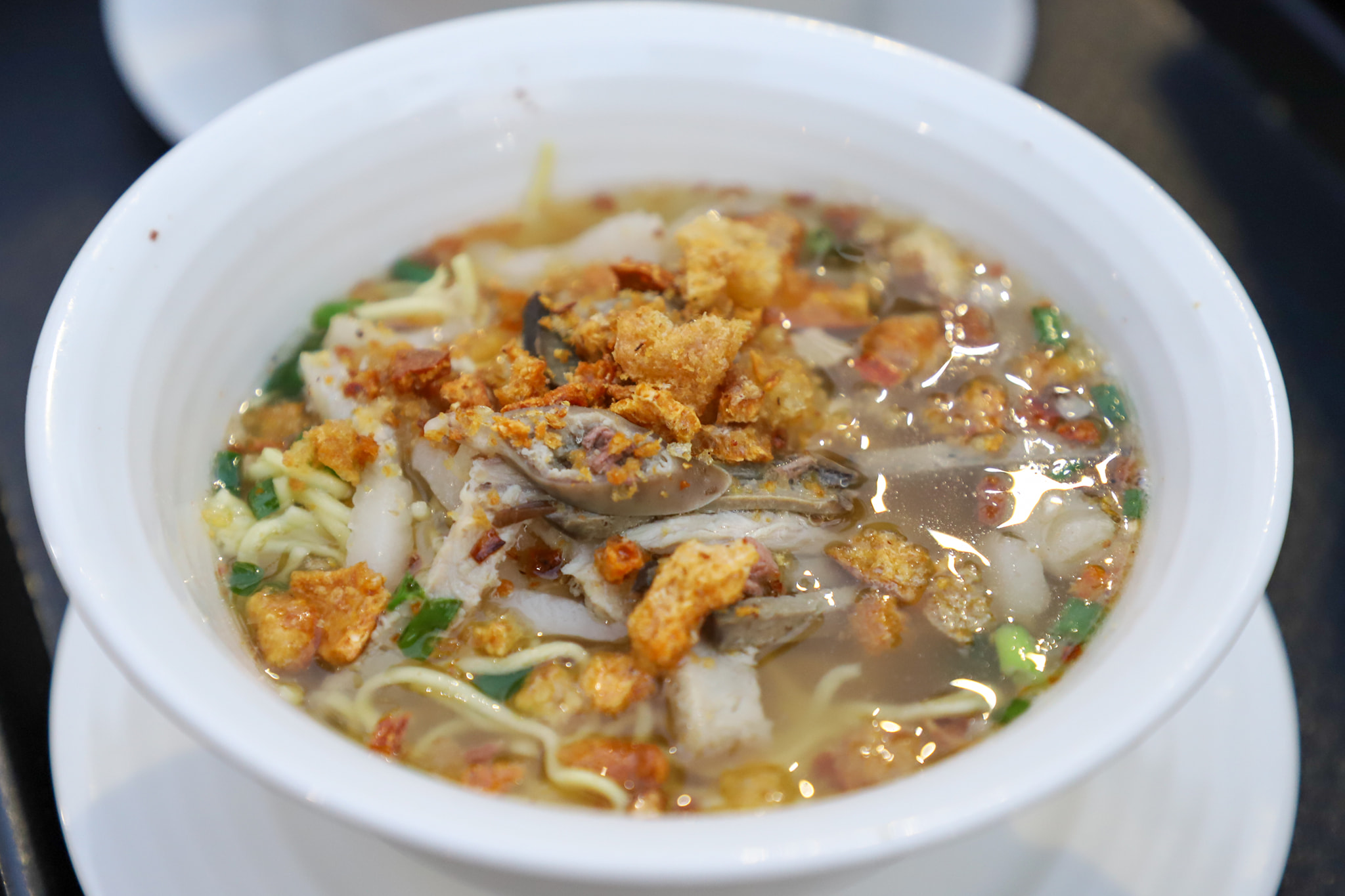
SARAP SARANGANI
The municipalities of Maasim, Kiamba, and Maitum are known for paragliding, diving, and river tubing adventures respectively. Also, not to be missed when in these places are their food products and delicacies one can’t find elsewhere. These include the tuna pookee being offered at Lemlunay Resort; nelut onok of the T’boli tribe in Kiamba; and Mase Juice and Cresilda’s Coffee of Cresing’s in Maitum.
LEBAK COAST TO TOAST
The Municipality of Lebak in Sultan Kudarat is another promising destination in SOCCSKSARGEN. The pristine beaches, waterfalls, and the Lebak Katunggan Coastal Eco Park are among the main attractions. The town is also well-known for its seafood products including crabs and prawns. Visit JMACS Resto for their Chicken Ala Max; Namit Seafood Resto & Chicken House for their Seafood Boodle Bundle set; Cindy’s Resto for their popular Alimango (crabs) in Sweet Chili Sauce and Pusit (squid) Paella Negra; and Almirante Gardens & Resto Bar for their garlic prawns.



